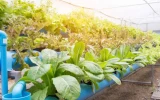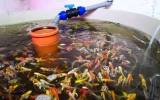Is Hydroponic Farming Profitable? (Full Breakdown)
Hydroponic farming, a method of growing plants without soil, is gaining popularity for its space efficiency and potentially lower water usage. Many wonder about its profitability, especially considering the initial setup costs and ongoing expenses. In this article, we offer a comprehensive breakdown of the financial aspects of hydroponic farming, helping you understand whether it can be a profitable venture for you.
Hydroponic farming can be profitable, depending on scale, crops, and market. Startup costs range from $20,000-$100,000 per acre. Estimated profits for hydroponic farming range from $20,000 to $100,000 per acre annually, with high-value crops like herbs and leafy greens often yielding higher returns.
While it's true that hydroponic systems can be expensive to set up, they offer the potential for high yields in small spaces. As you read further, you'll also learn some tips on how you can reduce the overall setup costs while maximizing your profits.
Summary
- The estimated revenue per acre of hydroponics can range from $200,000 on the low end up to $250,000 on the high end, depending on factors like location, market demand, crop prices, and operational efficiency.
- Hydroponic systems can achieve yields 5-10 times higher than traditional soil farming; for example, hydroponic lettuce may produce 20-25 harvests per year compared to 2-3 harvests in soil.
- The return on investment period for hydroponics is typically 3-5 years to break even, faster than traditional farming which can take 5-10 years to become profitable.

On this page:
Potential Revenue From Hydroponic Farms
Profits can be sizable, but they depend on various factors, including the choice of crops and the efficiency of your hydroponic system.
Hydroponic farming profit per acre
To give you a clear picture, we can break down the approximate financial outcomes you might expect per acre of hydroponic farming. Remember, these figures can vary based on location, market demand, and operational efficiency.
Estimated revenue range
- Low end: $200,000
- High end: $250,000
Profit margin
Average profit margin in hydroponic farming: 40% - 50%
This is significantly higher compared to traditional soil farming.

Most profitable crops:
- Leafy greens (e.g., lettuce, kale)
- Herbs (e.g., basil, cilantro)
- Tomatoes
- Cucumbers
Yield:
Hydroponic systems can produce yields up to 10 times higher than traditional farms.
Return on investment (ROI):
Initial investment can be high, but ROI is generally quicker than soil-based farming due to higher yields and continuous production cycles.
| Revenue | Expenses | Net Profit | ROI (%) |
|---|---|---|---|
| $200,000 - $250,000 | Varies (depends on scale) | Varies (depends on revenue and expenses) | 20% - 40% (after 3-5 years) |
Calculating profit margin for hydroponic farming
Revenue:
Sold $100,000 worth of produce
Expenses:
- Seed/plant costs: $20,000
- Labor costs: $25,000
- Equipment costs: $15,000
- Utilities: $10,000
- Other supplies: $5,000
Total expenses: $20,000 + $25,000 + $15,000 + $10,000 + $5,000 = $75,000
Profit = Revenue - Expenses = $100,000 - $75,000 = $25,000
Profit margin = (Profit / Revenue) x 100 = ($25,000 / $100,000) x 100 = 25%
The profit margin is 25%, which falls within the typical range of 10% to 30% for the hydroponic farming industry.
Costs to Setup a Hydroponic Farm
Before diving into specific costs, understand that hydroponic farming can vary greatly in expenses based on scale, technology, and crops. Here's a focused look at the costs per acre, helping you see the bigger financial picture.
Initial cost to set up the hydroponic farm
| Initial Cost | Estimated Range |
|---|---|
| Land/Facility | $10,000 - $500,000 |
| Hydroponic system | $5,000 - $50,000 |
| Growing medium | $1,000 - $5,000 |
| Nutrients | $500 - $2,000 |
| Seeds/Seedlings | $100 - $1,000 |
| Lighting | $1,000 - $10,000 |
| Climate control | $5,000 - $15,000 |
| Water system | $1,000 - $5,000 |
| Containers | $500 - $2,000 |
| Total initial costs | $25,000 - $500,000 |
-
Land/Facility: This includes the cost of purchasing or leasing land and constructing or retrofitting a facility like a greenhouse or warehouse to accommodate the hydroponic system. Costs range from $10,000 for a small setup to $500,000 for a large commercial facility.
-
Hydroponic system: This is the equipment needed to build the hydroponic system, including growing beds, reservoirs, piping, pumps, control systems, etc. System costs range from $5,000 for a basic home setup to $50,000 or more for a large commercial system.
-
Growing medium: Different mediums like perlite, clay pebbles, or coconut coir are used to support plant roots in hydroponics. Initial supply costs range from $1,000 to $5,000 depending on scale.
-
Nutrients: The mineral nutrient solutions used in hydroponics. Initial supply costs range from $500 to $2,000.
-
Seeds/Seedlings: The seedlings or vegetative starts for the first crop. Costs range from $100 for a small hobby grower to $1,000 or more for a commercial facility.
-
Lighting: Supplemental lighting like LED grow lights. Lighting can cost $1,000 to $10,000 depending on the setup.
Climate control: Systems like heaters, exhaust fans, and AC to regulate temperature and humidity. Starts at $5,000 for hobby systems and up to $15,000+ for large facilities.
-
Water system: Pumps, pipes, valves, and filters to deliver and recirculate water. Initial costs range from $1,000 to $5,000.
-
Containers: The pots or channels that hold the growing medium. Costs range from $500 to $2,000 depending on scale.
Ongoing costs to maintain a hydroponic farm
| Ongoing Costs | Estimated Annual Range |
|---|---|
| Labor | $10,000 - $100,000 |
| Utilities | $5,000 - $20,000 |
| Nutrients | $2,000 - $10,000 |
| Seeds/Seedlings | $1,000 - $5,000 |
| Equipment maintenance | $1,000 - $5,000 |
| Water | $1,000 - $5,000 |
| Marketing | $1,000 - $10,000 |
| Insurance | $1,000 - $5,000 |
| Other supplies | $1,000 - $5,000 |
| Total ongoing costs | $25,000 - $150,000 |
-
Labor: This includes workers' wages for tasks like planting, harvesting, processing, and maintenance. Labor costs can range from $10,000 for a small operation to over $100,000 annually for a large commercial facility.
-
Utilities: Electricity, gas, etc. to run equipment like lights, climate control systems, and water pumps. Utility costs typically range from $5,000 to $20,000 per year.
-
Nutrients: The ongoing cost of mineral nutrient solutions used in the hydroponic system. Ranges from $2,000 to $10,000 annually.
-
Seeds/seedlings: The recurring cost of seeds and vegetative starts for planting new crops. Typically $1,000 to $5,000 per year.
-
Equipment maintenance: Regular maintenance and repairs on the hydroponic system, pumps, climate control, etc. Usually $1,000 to $5,000 annually.
-
Water: Usage costs for fresh water to replenish the hydroponic system. Ranges from $1,000 to $5,000 depending on the operation.
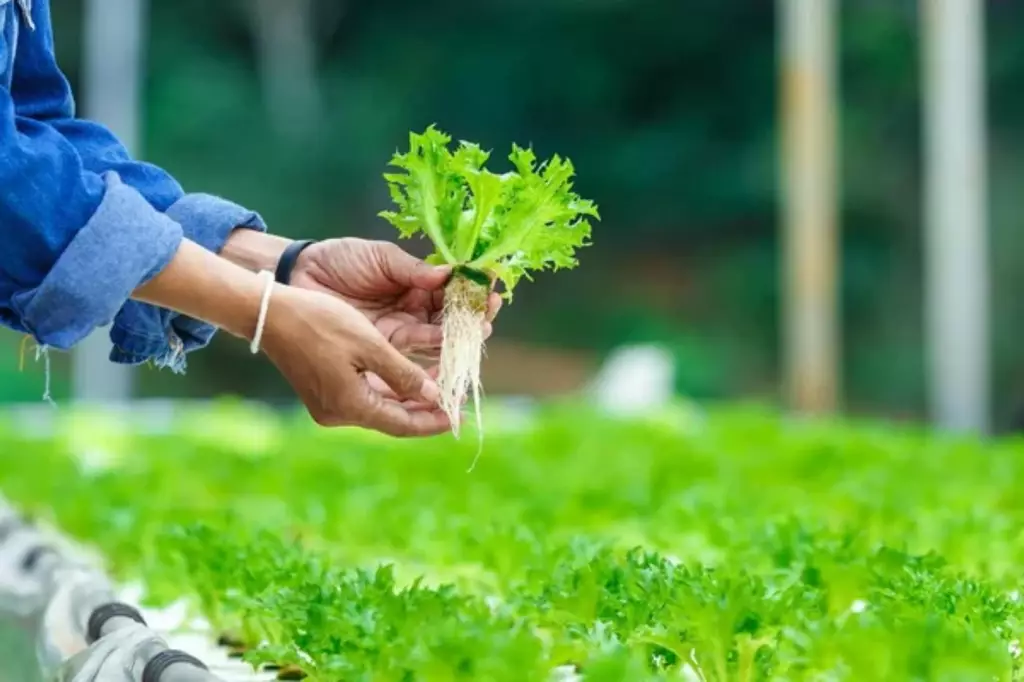
-
Marketing: Costs for advertising, promotions, and selling produce. Can range from $1,000 for a small farm up to $10,000+ for large operations.
-
Insurance: Policies to cover crops, equipment, and liabilities. Typically $1,000 to $5,000 annually.
-
Other supplies: Miscellaneous consumable supplies for the farm. Average around $1,000 to $5,000 per year.
Hydroponic farming cost per acre
| Cost Type | Estimated Range per Acre |
|---|---|
| Startup costs | $40,000 - $1,000,000 |
| Materials | $5,000 - $20,000 |
| Labor cost | $2,000 - $50,000 |
| Operating expenses | $10,000 - $500,000 |
| Miscellaneous costs | $1,000 - $5,000 |
To start your hydroponic farm, you'll face startup costs that cover infrastructure like greenhouses, hydroponic systems, lighting, and climate control systems.
Your materials budget should consider growing mediums, nutrients, and seeds. Labor costs will largely depend on the automation level and farm size.
Operating expenses comprise utility bills, maintenance, and replenishment of materials. There's also a miscellaneous category, which can include unexpected repairs or additional tools.
Profit margins in hydroponic farming can be higher due to the efficient use of space and resources, leading to faster growth cycles and higher yields. However, the initial investment plays a large role in determining long-term profitability.
Factors Affecting the Profitability of Hydroponic Farming
The profitability of your hydroponic farm hinges on a multitude of specific factors, ranging from the control you have over the growing environment to the efficiency of your farming techniques and the market's demand for your produce.
Environmental control
| Factor | Impact Range on Profitability |
|---|---|
| Temperature | High: Proper temperature control can significantly increase crop yields. |
| Light | High: Adequate lighting is essential for plant growth and can lead to more harvests per year. |
| Moisture | Medium: Maintaining the right moisture levels is key for plant health and minimizing water waste. |
Enhancing your environmental control within your greenhouse or hydroponic farm means tightly managing factors like temperature, light, and moisture.
This often requires upfront investment in a controlled environment but can lead to year-round production and potentially higher profits.
Agricultural techniques
| Factor | Impact Range on Profitability |
|---|---|
| Hydroponic systems | High: the choice of the system affects nutrient delivery and plant health. |
| Nutrients | High: proper nutrition is critical for maximizing crop quality and yield. |
| Water Use | Medium-High: using water efficiently can reduce costs and increase sustainability |
Innovative agricultural techniques are at the heart of hydroponic farming. Utilizing the right hydroponic systems and providing precise nutrients to your crops can boost your farm's crop yields remarkably.
Also, being efficient with resources like water not only saves you money but also appeals to environmentally conscious consumers. To get a glimpse of the pros and cons of hydroponics compared to traditional farming, see this article.
Market factors
| Factor | Impact Range on Profitability |
|---|---|
| Demand | High: Higher demand can result in better prices and increased sales. |
| Social media | Medium: This can be used effectively for marketing to increase customer reach. |
| Amazon & other retailers | Medium: They offer platforms for potentially increasing sales. |
Understanding market factors, such as demand for your crops, helps in strategizing the sales and distribution of your produce. Leveraging platforms like social media or Amazon can be instrumental in expanding your market reach and can directly impact your sales and subsequent profits.
Profit margins in hydroponic farming can vary significantly but may be higher compared to traditional soil farming due to the potential for better crop yields and year-round production. Your location, use of land or space, and labor costs will further dictate your farm's profitability.
Careful Cost Management and Revenue-Boosting Strategies
By adopting innovative growing methods, optimizing resource use, and selecting the right crops, you can significantly enhance your farm's performance.
Innovative growing methods
Utilize cutting-edge techniques like aeroponics and vertical farming to maximize space efficiency and reduce the need for pesticides, as these methods expose your crops less to soil-borne pests. These innovative approaches can result in faster growth and higher yields.
| Method | Estimated Savings | Yield Increase |
|---|---|---|
| Vertical farming | 10-20% | 25-30% |
| Aeroponics | 15-25% | 30-40% |
Resource management
Your hydroponic system's pivotal components like LED grow lights, water pumps, and ebb and flow systems should be of high quality to ensure water efficiency and reduce costs associated with evaporation and waste.
- For LED Grow lights: On average, expect to save about 40-70% in energy costs compared to traditional lighting.
- Water Pumps should be selected based on efficiency ratings to cut down on electricity use.
Crop optimization
Choose crops that thrive in a hydroponic environment, like lettuce, herbs, and leafy greens, which are amenable to NFT systems, deep water culture, and drip systems for optimal growth. If combining your hydroponics with aquaculture in an aquaponic setup, avoid these 7 worst crops.
| Crop | Estimated Profit Margin |
|---|---|
| Lettuce | 50-60% |
| Herbs | 40-50% |
| Leafy Greens | 45-55% |
By selecting the right plants and pairing them with the most suitable hydroponic system, you can experience higher crop yields and more sustainable operations, creating a genuinely profitable ecosystem.
How to Make Money From Hydroponics
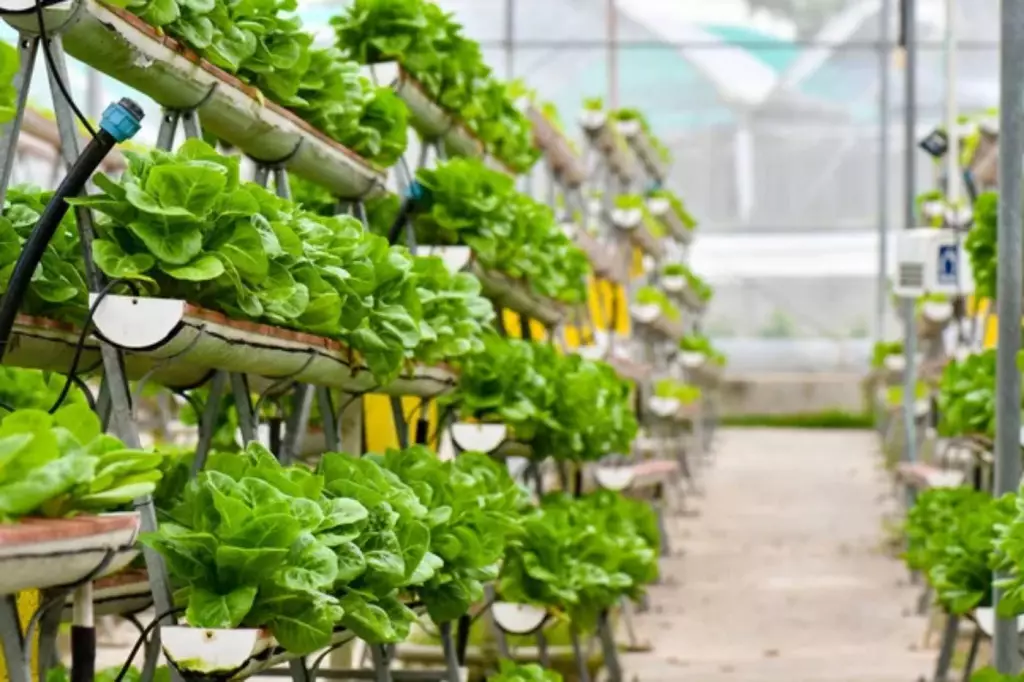
Hydroponics can be a lucrative venture if managed properly. Your initial setup will include costs such as equipment, seeds, nutrients, and possibly labor. However, once your system is operational, there are several ways to maximize profitability.
Opt for high-demand crop
Opt for crops with high demand and good market prices. Lettuce and other leafy greens are both cost-effective to grow and have consistent sales.
Most profitable crop for hydroponic
In hydroponic farming, your profitability often hinges on the type of crops you choose to grow. Certain crops yield a higher return due to their market demand and ease of growth in a controlled environment.
- Microgreens, for instance, are a popular choice. They grow quickly and require minimal space. Restaurants and health-conscious consumers are willing to pay a premium for their fresh, nutritional benefits.
Estimated profit margin for microgreens: 40-50%
| Crop Type | Estimated Time to Harvest | Estimated Profit Per Square Foot |
|---|---|---|
| Microgreens | 2-4 weeks | $20-30 |
- Herbs like basil and cilantro are also lucrative because they're a staple in culinary use and have a high turnover rate.
Estimated profit margin for herbs: 30-40%
| Crop Type | Estimated Time to Harvest | Estimated Profit Per Square Foot |
|---|---|---|
| Basil | 4-6 weeks | $15-25 |
| Cilantro | 3-4 weeks | $10-20 |
- Lettuce is a robust choice. It doesn't require high light levels and can be packed densely, maximizing your potential yield.
Estimated profit margin for lettuce: 20-30%
| Crop Type | Estimated Time to Harvest | Estimated Profit Per Square Foot |
|---|---|---|
| Lettuce | 5-6 weeks | $3-9 |
To capitalize on your hydroponic venture, choose crops that are easy to grow, have a short turnaround, and align with the demands of your market. This article has a longer list of the most profitable crops with the highest turnover rates.
Use energy-efficient systems
Minimize expenses by using energy-efficient systems and reducing waste. Automated systems can save you time and labor costs. Careful monitoring ensures nutrients and water are provided in optimal amounts.
Considerations for efficiency:
- Automated systems
- LED lighting
- Recycling water
- Tailored nutrient solutions
Marketing and sales
Sell your produce at farmers' markets, local stores, or directly to consumers through a subscription model. Fresh, locally grown hydroponic produce can fetch premium prices.
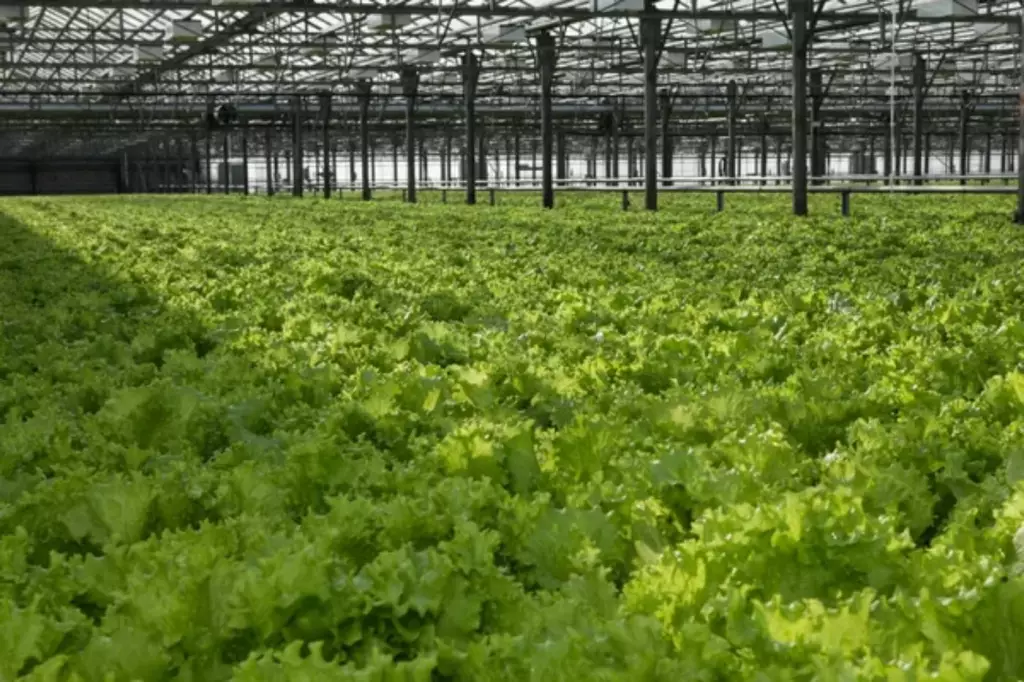
Sales venues:
- Farmers' markets
- CSA subscriptions
- Online marketplaces
- Restaurants
Scaling your operations
As your experience grows, consider scaling up. Larger operations can produce more crops and increase sales volume.
Scaling strategies:
- Expand greenhouse space
- Diversify crop types
- Employ vertical farming techniques
| Aspect | Estimated Profit Range |
|---|---|
| Small-scale setup | $20,000 - $50,000 annually |
| Medium-scale operation | $50,000 - $200,000 annually |
| Large-scale operation | $200,000 + annually |


